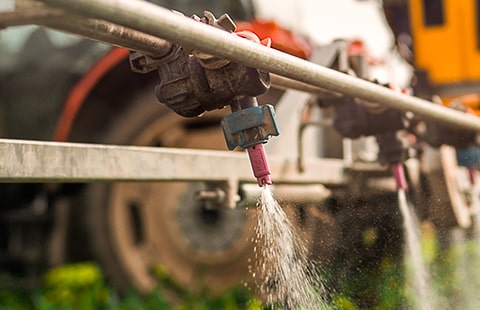Get unique, complex parts easily. No matter your requirements, Chaoyi Spring creates hard-to-produce coil springs and wire forms.
Let us help you create the custom wire form you need, from S-hooks and J-hooks to utility hooks and more.
We work closely with customers across a wide range of industries, helping them design and manufacture made-to-order parts.
Why choose Chaoyi Spring? We prioritize customer-focused collaboration, modern equipment and the latest technology to make your parts per print.
Find the information and guidance you need, from measuring a spring to learning about materials, placing an order and much more.
Spring compression tools are indispensable for anyone working with springs, whether you're a professional mechanic, a DIY enthusiast, or a hobbyist. These tools allow you to safely compress springs, making


Spring compression tools are indispensable for anyone working with springs, whether you're a professional mechanic, a DIY enthusiast, or a hobbyist. These tools allow you to safely compress springs, making it easier to install and remove them from various applications. From automotive repairs to home projects, spring compression tools come in a variety of designs and sizes to suit different needs. In this article, we'll explore the world of spring compression tools, examining their types, functions, and how to choose the right one for your specific project.

Spring compression tools are designed to safely compress and hold springs in place, reducing the risk of injury and damage. They are essentially devices that apply force to a spring, shortening its length and allowing you to easily install or remove it from its assembly.
There are numerous types of spring compression tools available, each with its own unique design and application. Here's a breakdown of some common types:
C-clamp spring compressors are perhaps the most basic and widely used type. They consist of a C-shaped frame with a threaded screw that adjusts the compression force. One end of the C-clamp is attached to a fixed point, while the other end is used to compress the spring. C-clamp compressors are relatively inexpensive and easy to use, making them ideal for basic spring compression tasks.
Two-arm spring compressors, also known as parallel-jaw compressors, are designed for compressing springs with two arms that extend and clamp onto the spring. They offer more control and stability compared to C-clamp compressors. Two-arm compressors are often used for larger springs, such as those found in automotive suspension systems. They can also be equipped with adjustable arms for greater versatility.
Internal spring compressors are designed to compress springs from the inside out. They are typically used for compressing springs within enclosed spaces or when access to the spring's outer diameter is limited. Internal compressors often feature a threaded shaft that extends into the spring, allowing for controlled compression.
Hydraulic spring compressors utilize the power of hydraulic pressure to compress springs. These tools are often used for heavy-duty applications or when extreme compression force is required. Hydraulic compressors typically have a pump that generates pressure, which is transmitted to a cylinder that acts on the spring.
Selecting the appropriate spring compression tool depends on a number of factors, including:
The size and type of the spring dictate the size and type of compression tool required. Smaller springs can be compressed with C-clamp or two-arm compressors, while larger springs may require hydraulic or internal compressors.
The amount of force needed to compress the spring is another crucial factor. C-clamp compressors are suitable for moderate compression forces, while hydraulic compressors can handle much higher forces.
The accessibility of the spring determines the type of compressor you need. If the spring is located in a tight space, an internal compressor may be the only option. For springs that are easily accessible, C-clamp or two-arm compressors will suffice.
Spring compression can be dangerous if not done properly. Here are some crucial safety precautions to keep in mind:
Spring compression tools are essential for anyone working with springs. They provide a safe and efficient way to compress and hold springs, making installation and removal tasks easier. By understanding the different types of spring compression tools and considering the factors involved in choosing the right one for your project, you can ensure that your work is done safely and effectively. Remember to always prioritize safety and use proper techniques when working with spring compression tools.
Whether you're a professional mechanic, a DIY enthusiast, or simply a homeowner tackling a project, spring compression tools are invaluable assets for handling springs. Their ability to safely compress springs makes installation and removal effortless, while their variety of designs cater to various needs and spring sizes. Remember to prioritize safety and choose the right tool for your project, ensuring your work is done efficiently and without risk.
Browse some of the custom wire forms and springs that we manufacture. Don’t see what you need? We specialize in made-to-order products that meet your application requirements.
Visit Our GalleryNeed a custom wire form or coil spring? We make it work. Fill out the contact form and a representative will respond within 1 business day. If you have a PDF or CAD file, you can submit to request a quote.